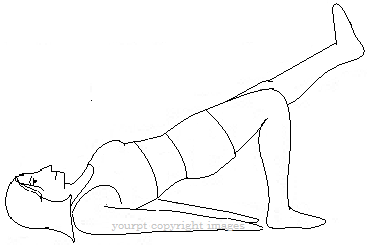Core stability is a group of muscles surrounding your back and abdomen. These muscles are also known as the 'core', Core stability means ability of the person to control his/her the position and movement during some specially exercises this exercises work centrally in a axial point in body, core stability exercises works deeply in your back and abdomen muscles which connect to the spine, pelvis, shoulders and help your to maintenance good health neutral posture and improve for all arm and leg movements
Core stability exercises benefits
1- Improve coordination in your limbs
2- Increase your functional activities
3- Improve your body postural
4- Increase your body Range of motions (ROM)
5- Reduce risks factors of injury
6- Improve general body power
Also Core stability exercises can be used as
therapeutic exercises of some cases
1- Lowe back pain
2- Rehabilitating athletes after injury
Instruction you must follow when you doing
Core stability exercises
1- Breathe normally and do not hold your breath, holding breath is sign that you are not relaxed
2- You can use Core stability exercises as cooling down after hard exercises
3- Don't let your abdominal muscles bulge that mean you using your rectus abdominus muscle instead of the transverses abdominis
Lets Start
1- Oblique Crunches
Lie on your back. Raise your legs and bend them so that you form a 90 degree angle with your hips and knees. Place your hands on side of your body
A) Support your feet by chair placed under your heel if you find that exercises hard hold to 1 Minute then relax repeat this for 5 time
B) increase difficulty of the exercises by remove the chair and hold 30 seconds then relax repeat this for 3 time
2- Oblique Plank
a) On your side, balance on your right fore-arm with your shoulder above your elbow.
b) With your legs out straight to the left, lift your pelvis so that you are balanced on your fore-arm and feet. Your body should form a straight line and you should feel the oblique muscles down the side of your trunk working to maintain the position.
c) Hold for 1 minute then repeat on other side.
b) With your legs out straight to the left, lift your pelvis so that you are balanced on your fore-arm and feet. Your body should form a straight line and you should feel the oblique muscles down the side of your trunk working to maintain the position.
c) Hold for 1 minute then repeat on other side.
a) Lie on your back with your knees flexed and your feet flat on the floor.
b) Rise up your pelvis so that you form a bridge position with a straight line running from your shoulders to your knees.
c) Release your left leg off the floor and extend it so that it continues the straight line. You should be able to feel your right buttock, your back, and lower abdomen working to keep the position.
d) Hold for 30 seconds then repeat 3 times for each legs.
Note : avoid your pelvic tilt at all while your leg raised
a) Balance on the floor on your hands and knees. back should be flat and your hips parallel to the floor.
b) Raise one leg behind you as much as you can and don't rotating your hips or arching your back. The movement should be slow and controlled.
c) hold for 30 seconds then relax repeat 3 time for each legs
a) Balance on the floor on your hands and knees. back should be flat and your hips parallel to the floor.
b) Raise your right arm out in front of you then raise your left leg out behind you, keeping it straight
c) hold for 30 seconds then relax repeat this in the other side and relax. Repeat this exercise 3 time for each side
a) resting on your fore-arms with your shoulders directly over your elbows.
b) Straighten your legs out behind you and lift up your hips to form a straight line from your shoulders to your ankles. You should be balanced on your fore-arms and toes, with your lower abdomen and back working to keep your body straight. Hold for 1 minute repeat 3 time















